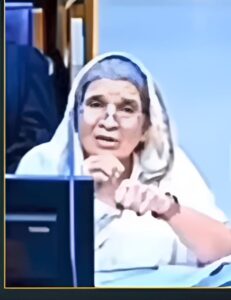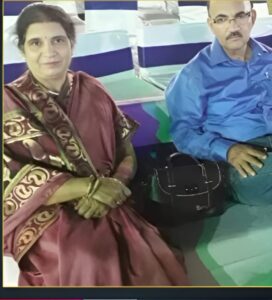
Former Chemistry Professor Mamta Pathak Gets Life Sentence for Husband’s Murder After Defending Herself in Court,
In a case that has captured national attention for its dramatic courtroom twists and the unlikely figure at its center, Mamta Pathak, a former chemistry professor from Chhatarpur, Madhya Pradesh, has been sentenced to life imprisonment for the murder of her husband, retired government doctor Dr. Neeraj Pathak.
The Madhya Pradesh High Court, in a 97-page detailed judgment, upheld a lower court’s conviction, reaffirming that Mamta was responsible for Chemistry Professor husband’s mysterious death in 2021. What sets this case apart is not just the crime but Mamta’s bold decision to represent herself in court, using scientific reasoning in an attempt to overturn the verdict—an effort that went viral on social media and drew widespread public fascination.
Mysterious Death and Shifting Narratives
The case dates back to 2021, when Dr. Neeraj Pathak was found dead under suspicious circumstances at the couple’s residence. At first, police recorded the cause of death as an accidental electric shock. However, inconsistencies in the forensic and post-mortem reports soon raised red flags. Investigators suspected foul play, and after further examination, Mamta Pathak was arrested and charged with murder.
The couple was known to have ongoing domestic disputes, and Mamta’s alleged motive remained a key aspect of the investigation. In 2022, a district court, relying heavily on medical evidence and other material, convicted her and sentenced her to life in prison.
Following her conviction, Mamta was granted interim bail to care for her mentally challenged child. During this period, she filed an appeal in the Jabalpur bench of the Madhya Pradesh High Court, challenging the district court’s ruling. In a move that stunned the legal community, she chose to argue the appeal herself—without a lawyer.
Chemistry Professor courtroom performance was nothing short of extraordinary. Calm and articulate, Mamta argued that the medical conclusion could be flawed. She claimed that thermal burns and electric burns can appear strikingly similar and that only detailed chemical analysis could conclusively distinguish between them. Her scientific expertise, combined with her composure under pressure, drew both the attention of the court and the curiosity of the public.
When one of the judges asked, “Are you a chemistry professor?”, she replied, “Yes.” That brief exchange, along with clips from the hearing, quickly went viral on social media, where many users were impressed by her confidence and scientific reasoning. Her self-defence even sparked debates about women in science, courtroom rights, and the criminal justice system.
High Court Upholds Life Sentence, Chemistry Professor

Despite the public attention and her impassioned arguments, the High Court was unmoved by her defense. The bench, referring to Supreme Court precedents, concluded that the evidence and circumstances clearly pointed to her guilt. The court found no compelling reason to overturn the lower court’s judgment and confirmed the life sentence.
To ensure that Mamta received a fair hearing, the court had appointed senior advocate Surendra Singh as amicus curiae, while government advocate Manas Mani Verma emphasized the seriousness with which the case was handled.
In its ruling, the court stated that while her performance in the courtroom was commendable, it could not overshadow the concrete evidence presented against Chemistry Professor . The bench described the murder as “grave in nature” and ordered her immediate surrender to begin serving her sentence.
The case of Mamta Pathak stands out not just for its tragic elements but for its unique courtroom drama—where a woman accused of murder argued her own case using her academic knowledge. Her story has sparked a mix of admiration, debate, and reflection on justice, gender, and intellect.
While her scientific defense may not have saved her from a life behind bars, Mamta’s courtroom stand has ensured that her story will remain a talking point in India’s legal and social discourse for years to come.

